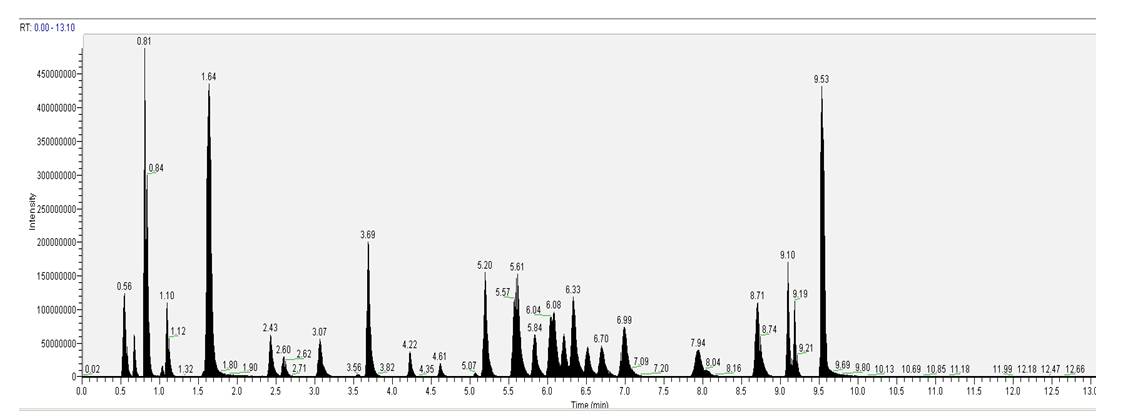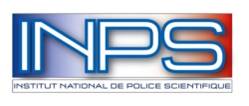|
Introduction
In the toxicology section of the forensic police in Lyon, onme of the projects was to develop an identification and quantification method of benzodiazepines in blood. This kind of study was required for medico-legal investigations in case of suspect death or crimes. The benzodiazepines are mainly used as hypnotics and anxiolytics but are already misused for chemical submission. The goal was to develop a LC-MS/MS assay for daily routine. The work was done on a new equipment and needed an adaptation to softwares. The fixed aim was to obtain a good separation of the compounds in fifteen minutes or less, by using less toxic solvents.
Experimental conditions
A selection of 34 benzodiazepines was separated on a 2.7µm, 100*3mm C18 Poroshell® column on a uHPLC Dionex® system. It was associated with a Thermoscientific® TSQ Quantum mass spectrometer. The ionization source was an Electrospray and the detector was a triple quadrupole.
The method was developed in four steps. The first was the molecules infusion to allow their detection. Then came the chromatographic optimization (experimental conditions, parameters, gradient…) and the detection optimization. The last step was the adjustment of quantification (linearity, calibration range…).
Results
The chromatographic optimization was chosen to be developed in the results’ part.
As the column (stationary phase) was already chosen, the chromatographic optimization concerned the mobile phase. Parameters as the composition of the solvent, the pH, the gradient, the additive were tested.
The optimal conditions chosen were:
- Ultra pure Water + 0.1% of acetic acid
- 25% Ethanol / 75% Acetonitrile
- Flow : 0.7mL/min
As showed in figure 1, the chosen gradient was carefully worked.
As showed in figure 2, the chromatogram obtained in optimal conditions allowed a good separation of the compounds with only a few coelutions.
Conclusion
Three of the four development steps were done during my placement. The analysis took thirteen minutes and allowed the identification of 34 benzodiazepines. The quantification step is still going on, the method will quantify 16 of the 34 compounds.
In daily routine, the software will give the name of the present compounds and their quantity automatically according to a calibration curve.
|
|

Final gradient of the method

Chromatogram of 34 benzodiazepines mixture in the optimal conditions of detection and chromatography.
|




